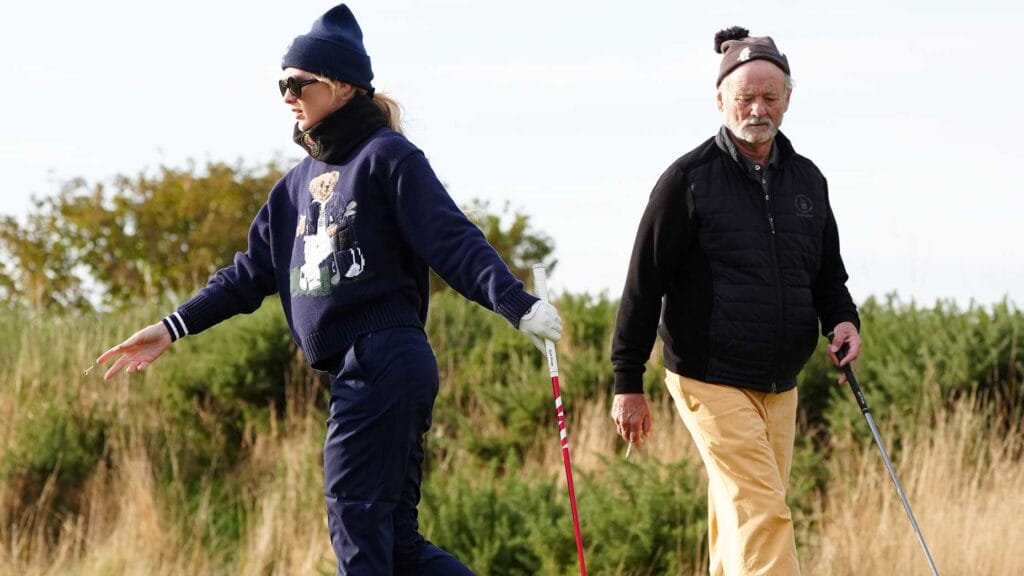The world of golf has long been associated with older players, but recent trends show that the sport is becoming increasingly popular among younger demographics. With celebrities like Justin Timberlake, Kathryn Newton, Mark Wahlberg, Patrick Mahomes, and Caitlin Clark taking up the game, golf is shedding its reputation as a sport for “old codgers.” This shift is evident in the record-breaking number of rounds being played, with 2024 set to mark the fifth consecutive year of over 500 million rounds played in the US.
According to the National Golf Foundation (NGF), there has been a significant increase in the number of on-course golfers in the US, with the average age of a golfer dropping from 44.6 to 43.5 years old since 2019. Moreover, golf participation among those aged 65 and older has increased by 64 percent in the past decade. Surprisingly, the NGF’s data shows that there are more golfers in the 18-34 age bracket than any other age group, challenging the stereotypical image of the average golfer being over 65.
Despite the increasing number of younger golfers, the NGF notes that older golfers are more likely to play more frequently and spend more money on the sport compared to their younger counterparts. However, as today’s young golfers age, they are expected to increase their playing frequency, potentially paving the way for a new generation of avid golfers. Regardless of age, the growing popularity of golf among all demographics is a positive sign for the future of the sport.
It is essential to recognize the diversity of the modern golfer and celebrate the fact that golf is attracting players of all ages. Whether you are a seasoned veteran or a newcomer to the game, there is a place for you on the golf course. As the sport continues to evolve and appeal to a broader audience, it is clear that golf is more than just a pastime for older generations—it is a dynamic and inclusive activity that transcends age barriers.
The data provided by the NGF offers valuable insights into the changing landscape of golf participation in the US. By highlighting the growing number of younger golfers and the increasing popularity of the sport across all age groups, the NGF’s research sheds light on the positive trajectory of the golf industry. As more people of all ages embrace golf as a recreational activity, the sport’s future looks bright and promising.
Whether you are a fan of the game, a casual player, or a serious golfer, it is encouraging to see the rising interest in golf among younger generations. With celebrities like Kathryn Newton and Bill Murray serving as ambassadors for the sport, golf is breaking free from its outdated image and appealing to a new wave of enthusiasts. By embracing golf as a fun and accessible activity for people of all ages, the sport is poised for continued growth and success in the years to come.
As golf continues to attract a diverse and engaged audience, it is essential to support initiatives that promote inclusivity and accessibility within the sport. By encouraging players of all ages to participate in golf and enjoy its many benefits, we can ensure that the game remains a vibrant and thriving pastime for generations to come. Whether you are a young golfer looking to improve your game or an older player seeking to stay active and healthy, there is something for everyone to enjoy in the world of golf.
In conclusion, the increasing popularity of golf among younger demographics is a positive sign for the future of the sport. By challenging stereotypes and embracing diversity, golf is evolving into a dynamic and inclusive activity that appeals to players of all ages. With celebrities like Kathryn Newton and Bill Murray leading the charge, golf is breaking free from its old image and attracting a new generation of fans. As the sport continues to grow and evolve, it is essential to support initiatives that promote inclusivity and accessibility within the game, ensuring that golf remains a beloved pastime for years to come.


